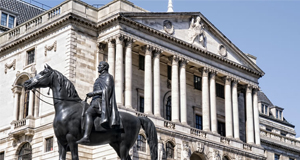 It would appear that markets are continuing to harbour doubts about the effectiveness of future central bank action against a backdrop of not only a weakening growth outlook, but also a weakening demand outlook for crude oil. After all its hard to be optimistic about economic growth prospects when oil demand from countries like India and China appears to be declining, if this week’s IEA report on future demand prospects pans out as expected.
It would appear that markets are continuing to harbour doubts about the effectiveness of future central bank action against a backdrop of not only a weakening growth outlook, but also a weakening demand outlook for crude oil. After all its hard to be optimistic about economic growth prospects when oil demand from countries like India and China appears to be declining, if this week’s IEA report on future demand prospects pans out as expected.
Another weak finish for US markets last night looks set to prompt a lower European open this morning, as the markets gear up for a week of central bank meetings starting today with the Swiss National Bank and Bank of England and culminating next week with the US Federal Reserve.
Last month the Bank of England cut rates for the first time since 2009 as well as embarking on an extra £70bn worth of asset purchases despite evidence in a lot of quarters that the slide in sentiment in the wake of the June Brexit vote proved to be a temporary phenomenon.
Since then there has been further evidence that the Bank of England could well have been a little hasty, not that you will hear policymakers admit the fact. They had already backed themselves into a corner of their own making in the lead up to August and to do nothing would probably not have gone down that well.
Nonetheless the apocalyptic vision that was painted by senior policymakers in the lead up and aftermath of June’s events, hasn’t as yet come to pass, and in all likelihood won’t either. It is slowly becoming apparent that while the Brexit vote has created some uncertainty with respect to the UK’s future trading relationships it is becoming apparent that what happens next will be part of a process with pros and cons on both sides.
The latest unemployment data remained steady at 4.9%, while the number of people in employment rose to a new record level, and while wages showed a minor slowdown to 2.1%, from 2.3%, they still remained well above the rate of inflation.
This is probably one of the reasons that consumer spending has held up so well thus far in Q3, and accounted for the strong rebound in retail sales in July, which saw a rise 1.4%, more than wiping out the decline seen in the June numbers.
It is clearly obvious that today’s August numbers won’t be anywhere near able to match the number seen in July, and could well see a decline if the equivalent BRC retail sales numbers are any guide. Nevertheless while they are expected to see a decline they aren’t likely to be anywhere near as poor as the numbers in June. A decline of 0.4% is estimated, ahead of today’s latest Bank of England rate decision.
While Bank of England governor Mark Carney has claimed that he is “serene” about the MPC’s “sledgehammer” actions last month he has already found himself in the uncomfortable position of having to defend the extent of the Bank’s response. This means that there is virtually no chance of any further policy action on the part of the central bank much before the Autumn Statement in November.
If anything the minutes could well show up robust debate particularly amongst those who voted against further QE at the last meeting, and who now have proved to have been correct in their assessment, that it wasn’t necessary, even though one of them Martin Weale has since been replaced by Citibank’s Michael Saunders.
Given that the recent fall in sterling has helped give inflation here in the UK an extra nudge higher, the same cannot be said for the euro area where inflation continues to remain stubbornly benign.
The final EU CPI numbers for August are expected to be confirmed at 0.2% on the headline rate and 0.8% on core prices, further increasing the pressure on ECB President Mario Draghi to do push the governing council to do more.
Unfortunately for him he appears to be running out of policy room with certain members of the governing council, while the fragile state of the European banks is another factor limiting his room for manoeuvre.
It’s also a busy day for US data with retail sales for August set to show an improvement on their underperformance in July, with a rise of 0.2% expected. Any improvement here is unlikely to move the dial on a rate move at next week’s Federal Reserve rate meeting, where it is expected that rates will in all probability remain on hold.
Weekly jobless claims are set to come in at 265k, while factory input prices are expected to show a modest rise to 1% from 0.7% in July.
EURUSD – continues to hold above the support near the 1.1120 area, to argue for a move back towards 1.1400 and June highs. A move below 1.1120 retargets the low 1.1000’s.
GBPUSD – fell through the support at the 1.3230 area raising the prospect of a move towards 1.3050 and the lows 2 weeks ago. We need to see a recovery back through the 1.3300 level to argue for a retest of the highs last week.
EURGBP – saw a move through the 0.8500 level yesterday and a push up to 0.8535. We need to hold above the 0.8480 area to argue for further gains towards the 0.8600 area.
USDJPY – the line of least resistance remains towards the downside while below the 103.50 area and for a move towards the recent lows around the 99.50 area.













